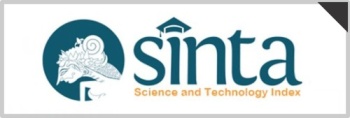The Usage of Synthetic Wood Analysis as an Alternative Material in Kudus Traditional Houses
(1) universitas surakarta
(*) Corresponding Author
Abstract
Kudus traditional houses are known as houses that have distinctive architectural features using teak wood as the primary material. However, the availability of teak wood is increasingly scarce due to continuous exploitation. In contrast, the growth of teak wood takes a long time until it is ready to be harvested and utilized as material. The constant exploitation of teak wood can affect global warming due to reducing forests as carbon sinks. On the other hand, global warming also impacts the durability of teak wood, which is the primary material in traditional Kudus houses, making it more resistant to damage. This condition requires high maintenance and maintenance costs, causing the number of Kudus traditional houses to decrease. In overcoming the dependence on teak materials in Kudus traditional houses, there is a need for a material strategy that can be used sustainably. This research explores sustainable strategies in using Kudus traditional house materials by replacing teak wood with synthetic wood, which is more readily available at a relatively cheaper price. This research method uses a qualitative approach with field observations and literature studies regarding teak materials. The results showed that several types of synthetic wood have the potential to replace teak wood in terms of durability, aesthetics, and environmental sustainability. Using synthetic wood can solve the scarcity of teak wood without sacrificing the cultural value of traditional Kudus houses. This research shows that adopting synthetic materials can effectively preserve traditional architecture while supporting sustainable development.
Keywords
Full Text:
PDF (Indonesian)References
Anggiriani, S., Nurhanifah and Sutiawan, J. (2023) Suatu Tinjauan Kecocokan Kayu Jati (Tectona grandis Linn F) Cepat Tumbuh untuk Bahan Baku Furnitur, JURNAL KEHUTANAN PAPUASIA, 9(1), pp. 6978. doi: 10.46703/jurnalpapuasia.Vol9.Iss1.430.
Arifin (2018) Ragam Hias Gebyok Kudus Dalam Kajian Semiotika, Jurnal SULUH, pp. 81101.
Ekarini, F. D. (2016) Dilema Pelestarian Rumah Adat Kudus, Jurnal Konservasi Cagar Budaya, 10(1), pp. 5663. doi: 10.33374/jurnalkonservasicagarbudaya.v10i1.147.
Fendi, . and Kurniaty, D. (2016) Identification Content Extract of Teak Wood Using Py-GCMS, Jurnal Ilmu Pertanian Indonesia, 21(3), pp. 167171. doi: 10.18343/jipi.21.3.167.
Hidayati, F., Ishiguri, F. and Marsoem, S. (2017) Anatomical characteristics and air-dry density of young trees of teak clones planted in Indonesia. doi: https://doi.org/10.5658/WOOD.2017.45.4.463.
Kedang, P. N. and Sari, D. R. (2023) POTENSI LIMBAH PENEBANGAN DI HUTAN ALAM DAN FAKTOR YANG MEMPENGARUHINYA, Jurnal Rimba Lestari, 2(1), pp. 3341. doi: 10.29303/rimbalestari.v2i1.2081.
Novianti, R., Rafdinal, R. and Turnip, M. (2022) Perbandingan Kantong Karbon dari 5 Jenis Tumbuhan Berkayu di Hutan Desa Dusun Manjau Kabupaten Ketapang, BIOLOGICA SAMUDRA, 3(2), pp. 141154. doi: 10.33059/jbs.v3i2.3902.
Park, S.-H. et al. (2018) Anatomical and Physical Properties of Indonesian Bamboos Carbonized at Different Temperatures, Journal of the Korean Wood Science and Technology, 46(6), pp. 656669. doi: 10.5658/WOOD.2018.46.6.656.
Putri, V. K., Pitana, T. S. and Setyaningsih, W. (2021) The resilience of Jenang industrial traditional houses against development of the times, IOP Conference Series: Earth and Environmental Science, 778(1). doi: 10.1088/1755-1315/778/1/012028.
Ridwan, R. et al. (2018) Tetraploid teak seedling was more tolerant to drought stress than its diploid seedling, Jurnal Penelitian Kehutanan Wallacea, 7(1), p. 1. doi: 10.18330/jwallacea.2018.vol7iss1pp1-11.
Salsabila, F. (2024) Kerusakan hutan jati di Jawa oleh eksploitasi VOC, 1611-1796, AGASTYA: JURNAL SEJARAH DAN PEMBELAJARANNYA, 14(1), pp. 3951. doi: 10.25273/ajsp.v14i1.15041.
Sandra, Y.- et al. (2023) Diversikasi Kerajinan Pandai Sikek untuk Meningkatkan Daya Saing di Pasar Global, Suluah Bendang: Jurnal Ilmiah Pengabdian Kepada Masyarakat, 22(2), p. 54. doi: 10.24036/sb.03640.
Sutoyo, S., Yudhanto, F. and Achmad, M. H. (2023) Optimasi Kegiatan Usaha Mebel Ranting Jati dan Rotan Melalui Aplikasi Teknologi Ramah Lingkungan Berbasis Renewable Energy, Surya Abdimas, 7(4), pp. 704714. doi: 10.37729/abdimas.v7i4.3398.
Utari, N., Diba, F. and Sisillia, L. (2019) PERBANDINGAN TINGKAT KEAWETAN KAYU SENGON (Falcataria moluccana L. Nielsen) DAN KAYU SUGI (Cryptomeria japonica D. Don) DENGAN EKSTRAK LIMBAH KULIT KAYU JATI (Tectona grandis L.F.) TERHADAP SERANGAN RAYAP TANAH Coptotermes curvignathus Holmgren, Jurnal TENGKAWANG, 8(2). doi: 10.26418/jt.v8i2.30893.
Wahyudi, I., Priadi, T. and Rahayu, I. S. (2014) Karakteristik Dan Sifat-Sifat Dasar Kayu Jati Unggul Umur 4 Dan 5 Tahun Asal Jawa Barat, Jurnal Ilmu Pertanian Indonesia, 19(1), pp. 5056.
Zulkahfi, Z. et al. (2020) Kadar Ekstraktif dan Sifat Warna Kayu Jati Plus Perhutani Umur 11 Tahun dari KPH Ngawi, Jurnal Ilmu Kehutanan, 14(2), p. 213. doi: 10.22146/jik.61419.
https://conwoodindonesia.com/ (diakses pada 02 Maret 2025)
DOI: http://dx.doi.org/10.30998/lja.v8i1.27973
Refbacks
- There are currently no refbacks.




